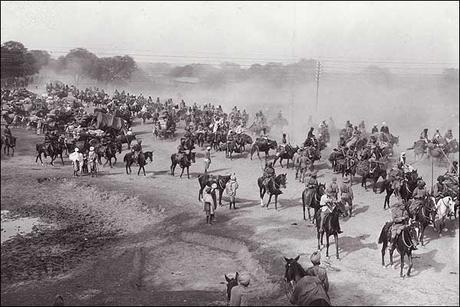The construction of public works in India was brought under the supervision of the Military Board of the East India Company on 3 May 1833. The regulation was passed ...'to provide more effectually for the management of convicts sentenced to labour and employed on the roads...' Almost all the major road projects undertaken since employed large bodies of convict labour.
An important feature characterizing the convict labour regime was the elaborate system of surveillance and control. On the Delhi-Allahabad road, for instance, there were fifteen gangs working. Each gang had over 300 prisoners with around 90 superintendents overlooking them. As the location of work continuously shifted, the need for fettering was felt. Convict workers had to work in fetters in the day, and at night groups of around twenty were bound together by a chain which ran through the central link chain that tied the convicts' legs. Sick convicts, even those in the last stages of disease, were kept in fetters.
Quoted from: Chitra Joshi, 'Fettered Bodies: Labouring on Public Works in 19th-century India' in: Labour Matters/ Towards Global Histories (New Delhi 2009)

